It’s the time of year for saving money!
I recently took advantage of a curious opportunity on your behalf, Dear Readers.
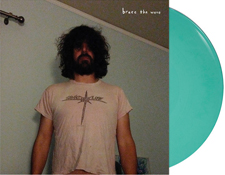 I joined the VIP club at indie record label Joyful Noise which enabled me to get in on one of their periodic special sales featuring exclusive colored vinyl and — sometimes, even — test pressings of new recordings by their artists. Ok, so I admit I joined partly for my own benefit too… I’ll fess up… I’m the obsessive record collector geek, after all…
I joined the VIP club at indie record label Joyful Noise which enabled me to get in on one of their periodic special sales featuring exclusive colored vinyl and — sometimes, even — test pressings of new recordings by their artists. Ok, so I admit I joined partly for my own benefit too… I’ll fess up… I’m the obsessive record collector geek, after all…
But I was really curious…
You see… one of said artists on said indie record label happens to be a fellow named Lou Barlow, whom some of you may know as the bass player in the “classic lineup” of Dinosaur Jr. If you are like me, you may know Lou more for his other band called Sebadoh, a group which has put out some of the most challenging, engaging and thoughtful rock music of the past 20 years. And, if you have really listened to Sebadoh, you no doubt have discovered a band embracing its multiple personalities, not only from its band members but also from the inner turmoil of the group’s composers.
Sebadoh can turn on a dime from creating a wall-of-sound of alternate-tuned, distorted, tape-over-saturated, churning-and-a-burning din…. to intense moments of hushed and highly melodic introspection. To the latter, in particular, Lou Barlow has emerged as an remarkable songwriter who creates these often gorgeous pop-folk-rock miniatures this side of Lou Reed’s contributions to The Velvet Underground.
On the Sebadoh records, Lou’s pop songs are sprinkled around the indie-rock barrage like rainbow-colored “Jimmies” on a soft-serve, custardy-creamy ice cream cone.
On his solo albums and key side projects, you get the full hot fudge indie-rock singer-songrwriter sundae (with the cherry on top), if you will…
Sometimes Lou plays a nylon string Guitar, sometimes he plays a four-string Guitar or a Ukulele. Whatever he plays, he tends to make music that evokes comparison to– at least from this reviewer, that is — no less than a modern day Donovan by way of REM’s Michael Stipe and The Lovin’ Spoonful’s John Sebastian.
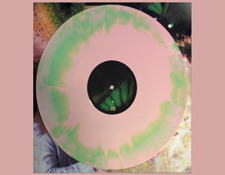 I was originally drawn to Sebadoh from seeing Lou perform acoustically on MTV’s 120 Minutes show back in the early ’90s performing songs with Husker Du’s Bob Mould. So its not surprising that I still gravitate to Lou’s solo works as well as with his “other” other band, The Folk Implosion (vs. his Dinosaur Jr. oeuvre)
I was originally drawn to Sebadoh from seeing Lou perform acoustically on MTV’s 120 Minutes show back in the early ’90s performing songs with Husker Du’s Bob Mould. So its not surprising that I still gravitate to Lou’s solo works as well as with his “other” other band, The Folk Implosion (vs. his Dinosaur Jr. oeuvre)
Lou’s got a lot of avenues for his music, folks… but no matter how he re-packages himself, at the end of the day he is ultimately Lou Barlow.
Going back to my opening paragraph, as part of the Joyful Noise VIP club I was able to get my hands on not only the new uber-limited edition (500 copies) Lou’s newest album on pink/green splatter vinyl copy — called Brace The Wave — and also one of 15 test pressings cut at 45 RPM!
The album came with a 44.1 / 16-bit CD-quality download…. so here I found myself swimming amidst a perfect storm enabling me to write up a little Lou vs. Lou vs. Lou shootout styled review of the new album.
First, lets get to the music: true to form, this is another one of Lou’s very personal, lovely, albums of confessional modern folk songs, crafted (I’m suspecting) in the aftermath of his recent divorce, a big focus on Sebadoh’s fine fine 2013 comeback album, Defend Yourself.
Brace the Wave is primarily acoustic music decorated with electric flair. There are some overdubs, but always central to the sound is Lou’s rich and emotive voice — which, again, reminds me of a cross between Donovan and John Sebastian — plus the free strumming pulse of his guitars. Occasionally, such as on the hymn-like album closer “Repeat,” you’ll hear bits of electric guitar and guitar harmonics. “Moving” has a soaring (probably analog) synthesizer solo in it which sounds not unlike the synth The Beatles used on their 1969 masterpiece Abbey Road (ie. “Maxwell’s Silver Hammer,” “Because,” etc.)
So, overall, how does Brace The Wave sound? In a word: beautiful! In fact, if you like sparse recordings that show off the warmth and resonance of your sound system and listening room, this album might even be a demo-worthy disc for some of you.
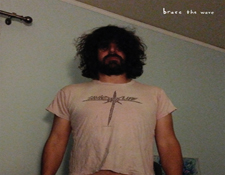 There is a lot of room ambiance on this album which gradually decreases as you drive down from the 45 RPM test pressing to the standard 33 1/3 RPM LP and down to the CD-quality download. Don’t get me wrong, the CD-quality download sounds pretty good but — comparatively — it offers up that compressed angularity which (to my ear) diminishes the music somewhat.
There is a lot of room ambiance on this album which gradually decreases as you drive down from the 45 RPM test pressing to the standard 33 1/3 RPM LP and down to the CD-quality download. Don’t get me wrong, the CD-quality download sounds pretty good but — comparatively — it offers up that compressed angularity which (to my ear) diminishes the music somewhat.
The differences between the 45 RPM test press and the LP are significant… differences which ultimately might be perceived as splitting hairs to some of you. That said, I can kinda see why the producers ultimately decided to press the album at 33 1/3. Unless you are a DJ or a fan of dance music, most people these days still consider a 12-inch record as one that spins at 33 1/3. Frankly, I suspect that Lou’s core audience are not exactly heavy audiophiles like many of you, Dear Readers. So the 33 1/3 LP is a happy medium which should satisfy the most listeners without forcing the artist to incur costs that may not be recoupable (ie. its probably more expensive to master and press albums spinning at 45 RPM).
]]>That said, the dead-quiet 45 RPM pressing is no doubt bigger sounding, with a fuller sense of bass and mid range, rounder guitar sounds, and a better sound stage. You can hear more detailing, such as on the track “Moving” where I can more clearly hear the slap back of the strings on one of Lou’s acoustic guitars as he strums it vigorously with his hands. The synth solo there soars even more.
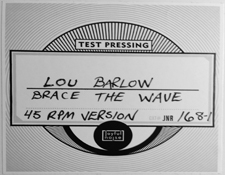 From the promotional trailer for Brace the Wave, we can see that the album was mixed to (probably) two-track analog tape (on an old Ampex machine!). I have no idea of the specifics of the actual recording “food chain” (if you will) employed, but this is one of those recordings that has a natural and airy ambiance.
From the promotional trailer for Brace the Wave, we can see that the album was mixed to (probably) two-track analog tape (on an old Ampex machine!). I have no idea of the specifics of the actual recording “food chain” (if you will) employed, but this is one of those recordings that has a natural and airy ambiance.
Humorously, there on the trailer promoting the album, Lou describes the collection as “an acoustic electric record recorded with electricity on analog digital and digitally analog equipment.”
So, yeah, you analog purists will have to accept that there is some digital process in the making of this album. My guess is that Brace the Wave was probably recorded at high resolution on a digital audio workstation (DAW) such as Pro Tools and then mixed down to two-track stereo analog tape. This approach is how one producer-engineer I’ve worked with a lot — Justin Phelps (Joe Satriani, Cake, Chuck Prophet, etc.) — recorded my old band (www.ingdom.com). It is a smart way to take advantage of the convenience and clarity of digital recording while embracing the analog elements which contribute to “the sound” of a well made analog record, the music benefitting from being run through a mixing board and recorded onto analog tape. Many producers and engineers will attest that the final sound of a record is ultimately determined at that final mix down stage when the music passes through the mixing board.
And then there is the mastering process, of course, but that is a whole other ball-o-wax …
Wrapping up, you may be wondering if Brace The Wave is a good place to start on exploring Lou Barlow’s music? I say, sure! Why not?
That is, if you like introspective, stripped down and passionate modern acoustic folk pop. Lou’s voice is really sweet and emotive; his songwriting tends to pull at heartstrings.
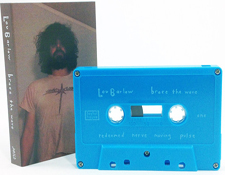 I do suggest you look for other Lou Barlow recordings such as his 2005 solo album EMOH and the highly under-rated gem from his Folk Implosion imprint called One Part Lullaby, released in 1999. As you get deeper into Lou’s work, like many fine indie artists, you’ll stumble across some rough edges made early on his journey, especially on his usually well labeled home recordings and the primitive first wave of Folk Implosion releases. I like most all of Lou’s music across all his various bands and side projects (even some of the tossed off demo sketches released under the name Sentridoh, recordings that rival Guided By Voices’ Robert Pollard for raw off-the-cuff spirit).
I do suggest you look for other Lou Barlow recordings such as his 2005 solo album EMOH and the highly under-rated gem from his Folk Implosion imprint called One Part Lullaby, released in 1999. As you get deeper into Lou’s work, like many fine indie artists, you’ll stumble across some rough edges made early on his journey, especially on his usually well labeled home recordings and the primitive first wave of Folk Implosion releases. I like most all of Lou’s music across all his various bands and side projects (even some of the tossed off demo sketches released under the name Sentridoh, recordings that rival Guided By Voices’ Robert Pollard for raw off-the-cuff spirit).
If you don’t like colored vinyl, Brace the Wave is also available on black vinyl for two dollars less than the regular seafoam green vinyl edition (via the Joyful Noise website).
Brace the Wave might well signal that it is a good time for you to take a swim with Lou Barlow. This time ’round, the tides swirling around his universe are warm and gently churning… so come on in… the water is great!
Surf’s up!






